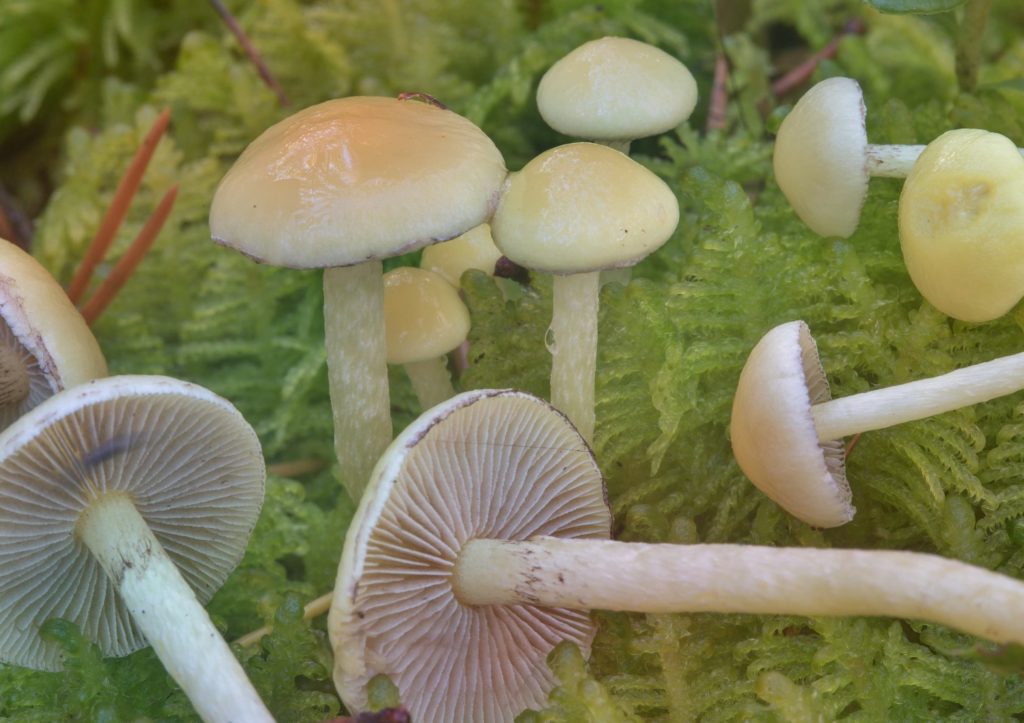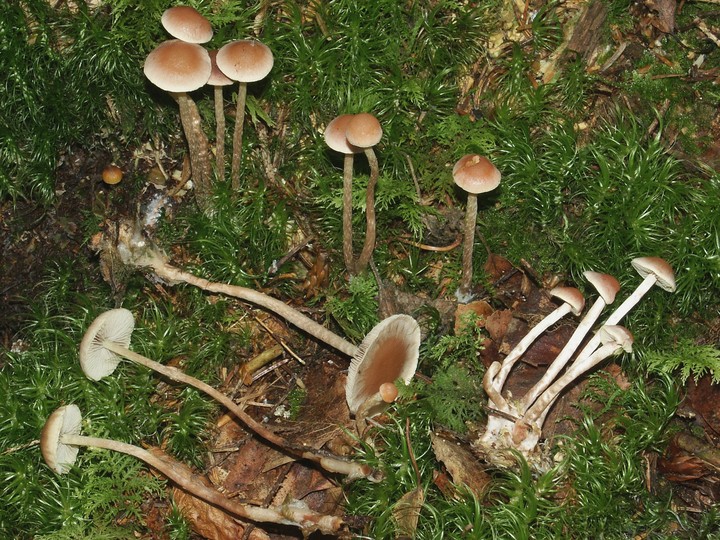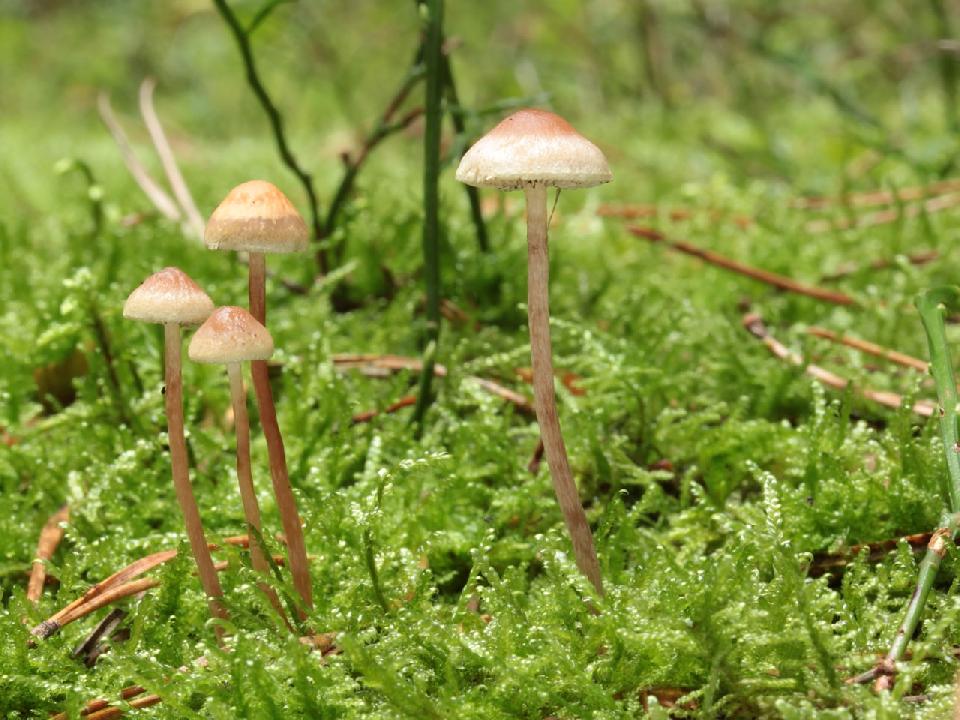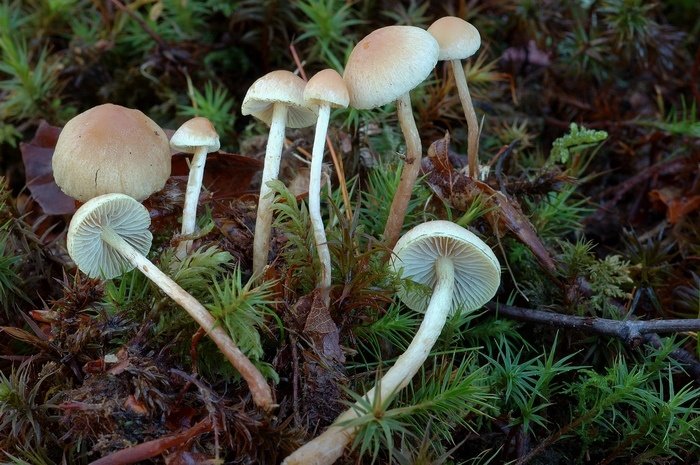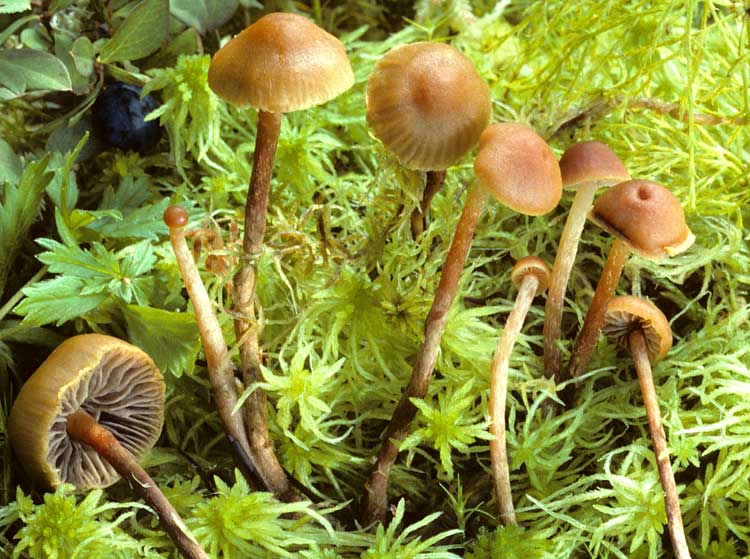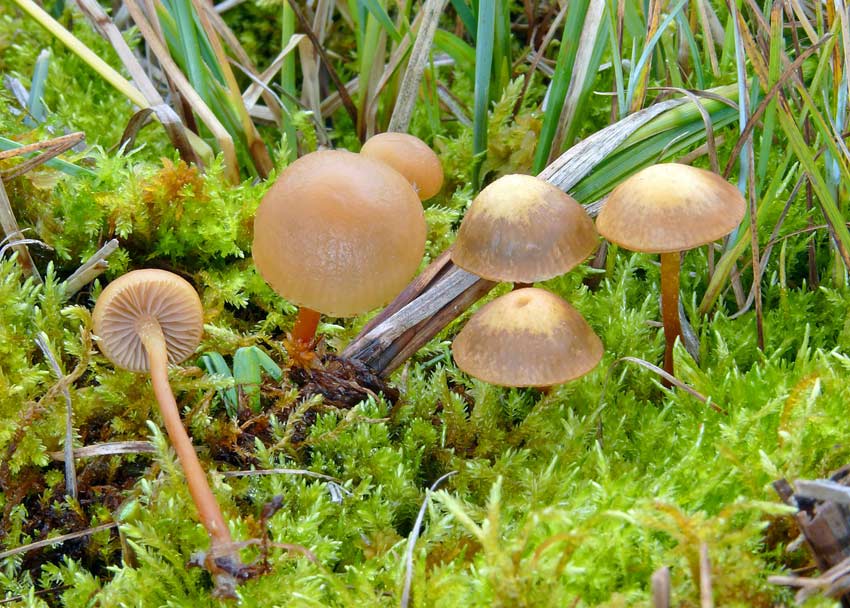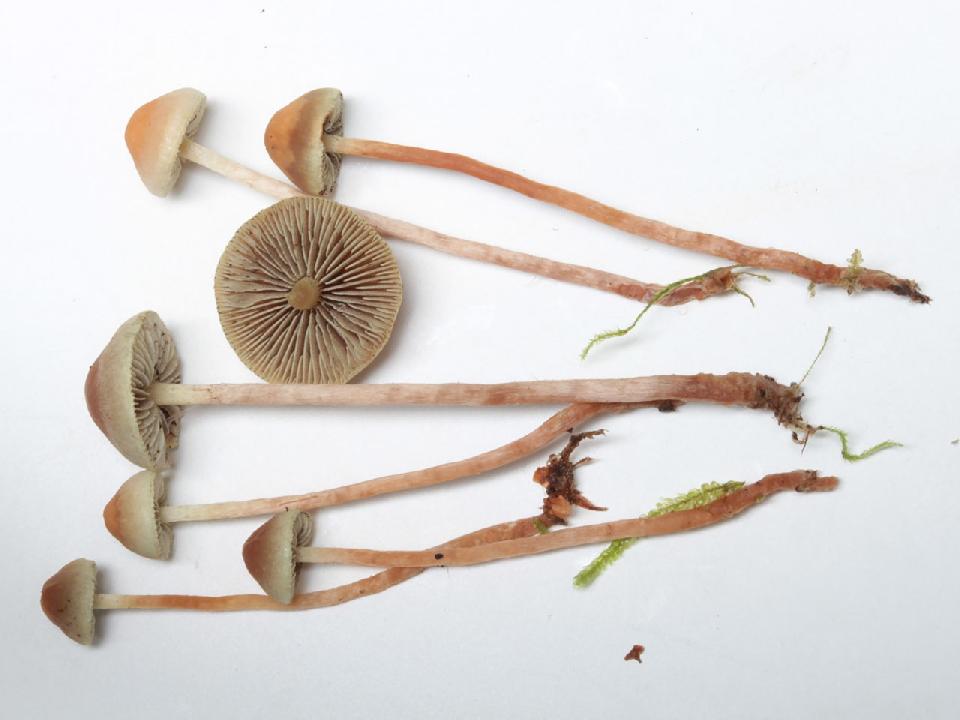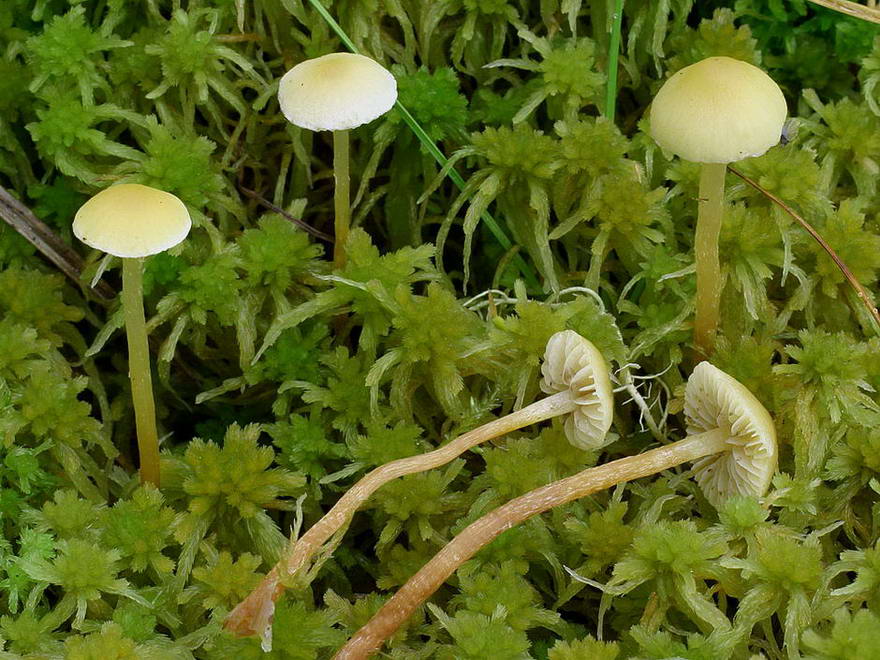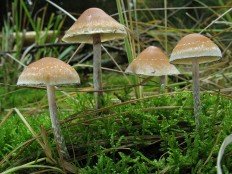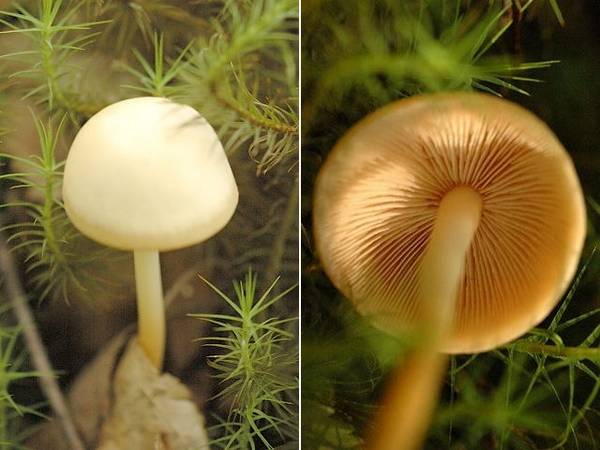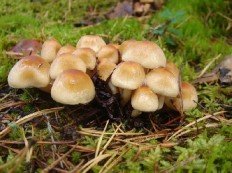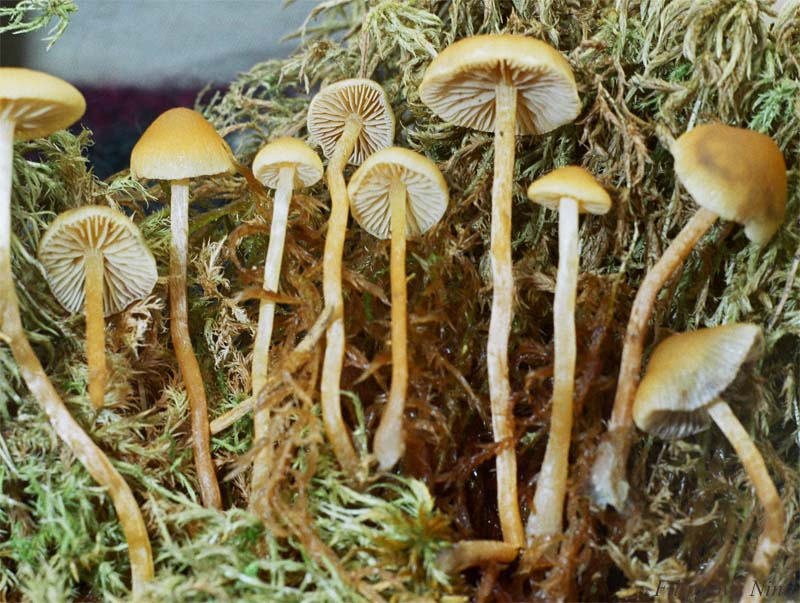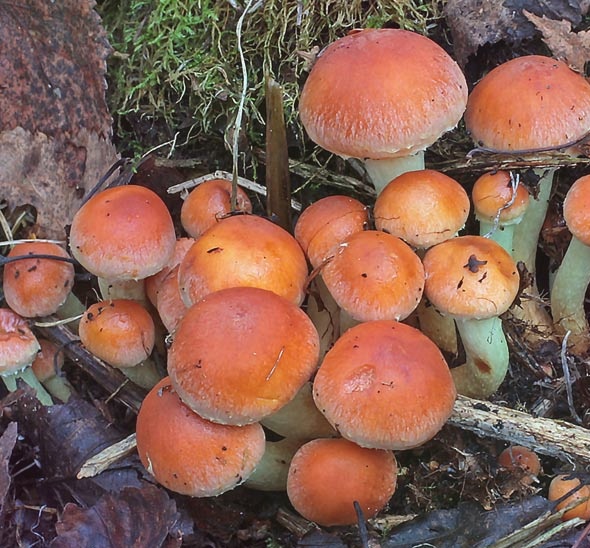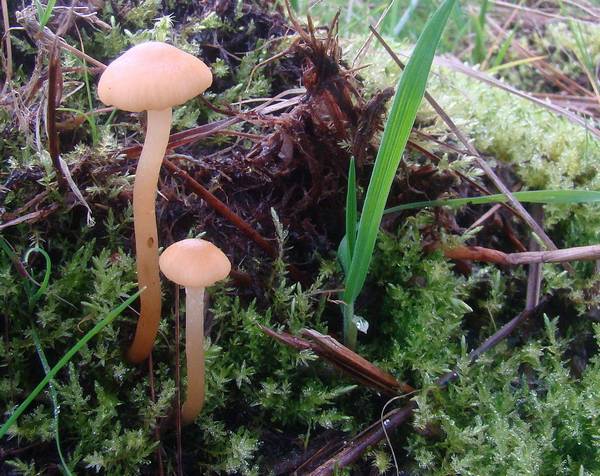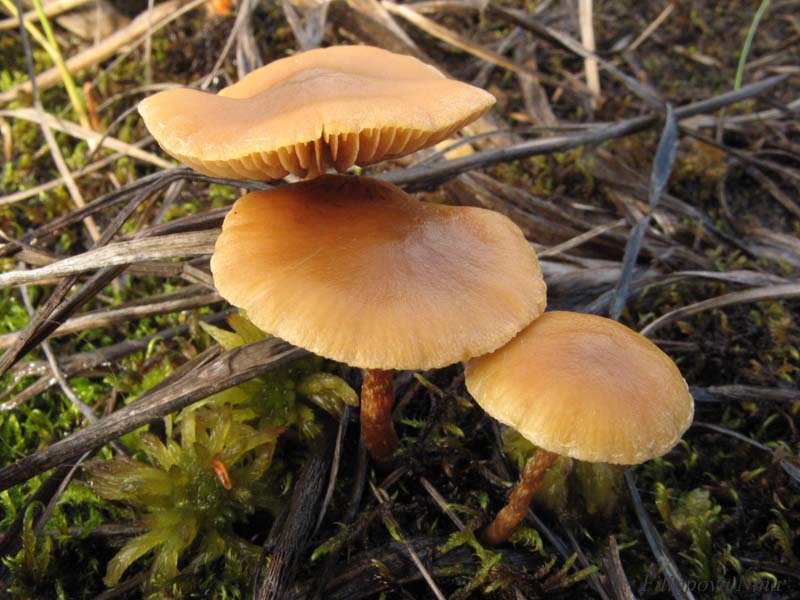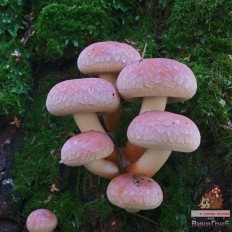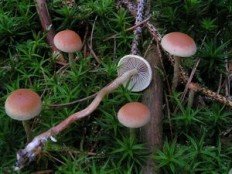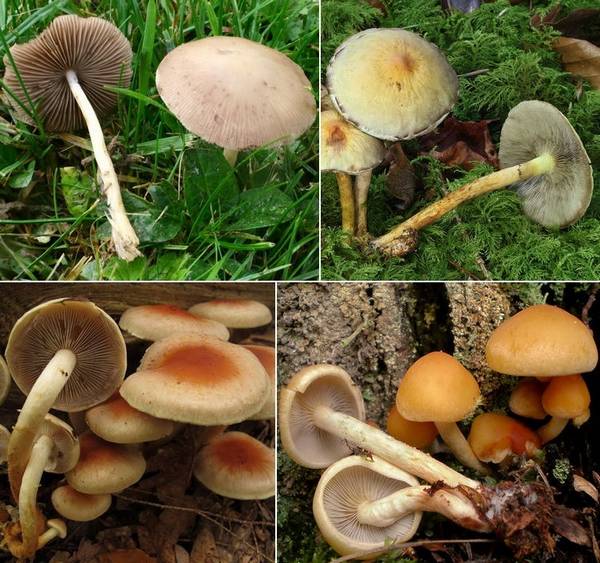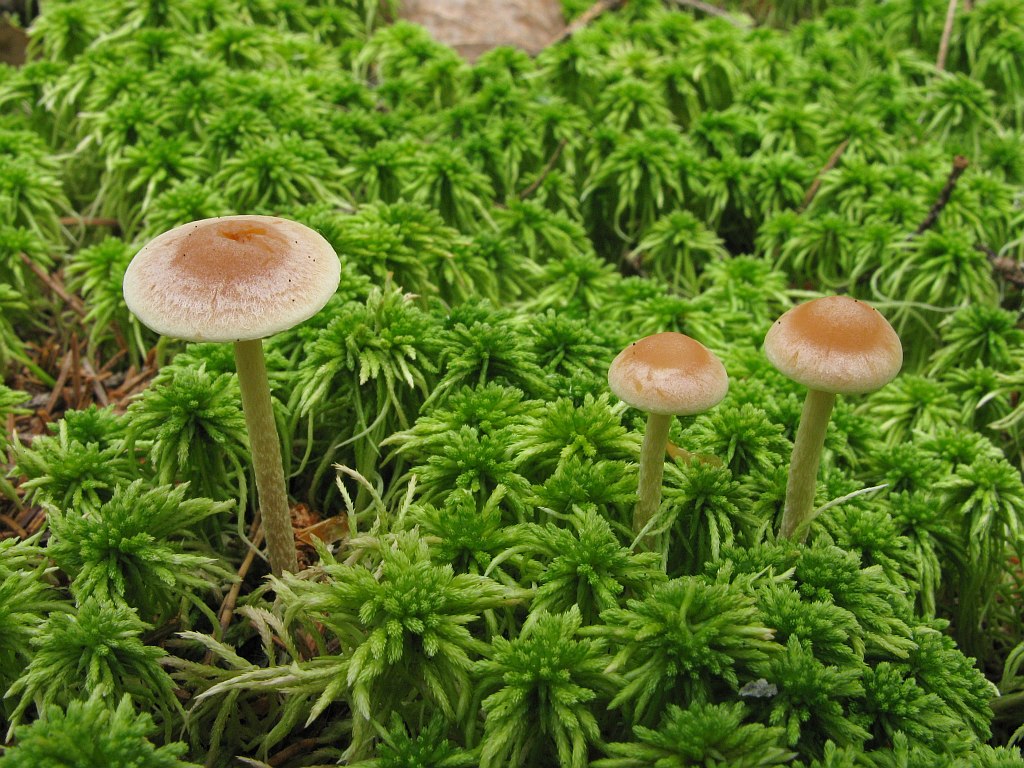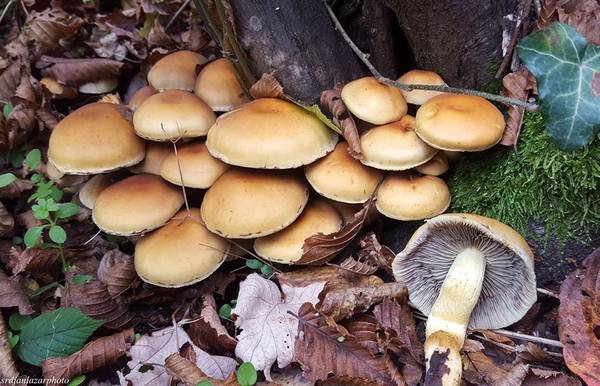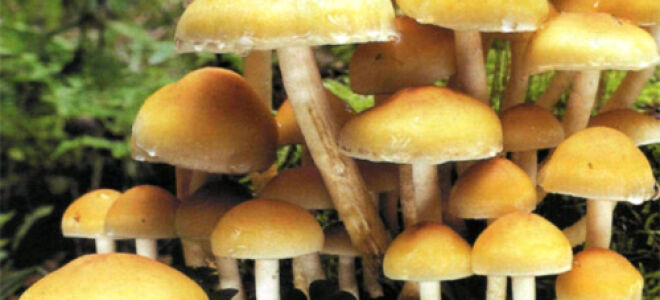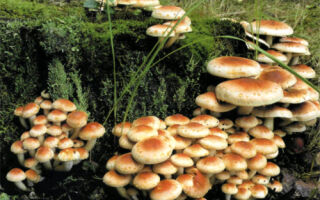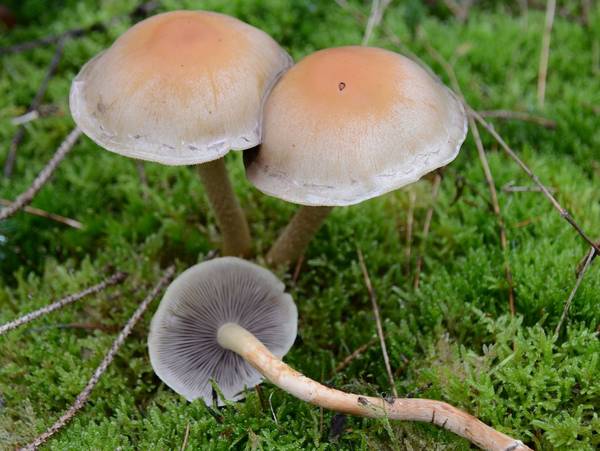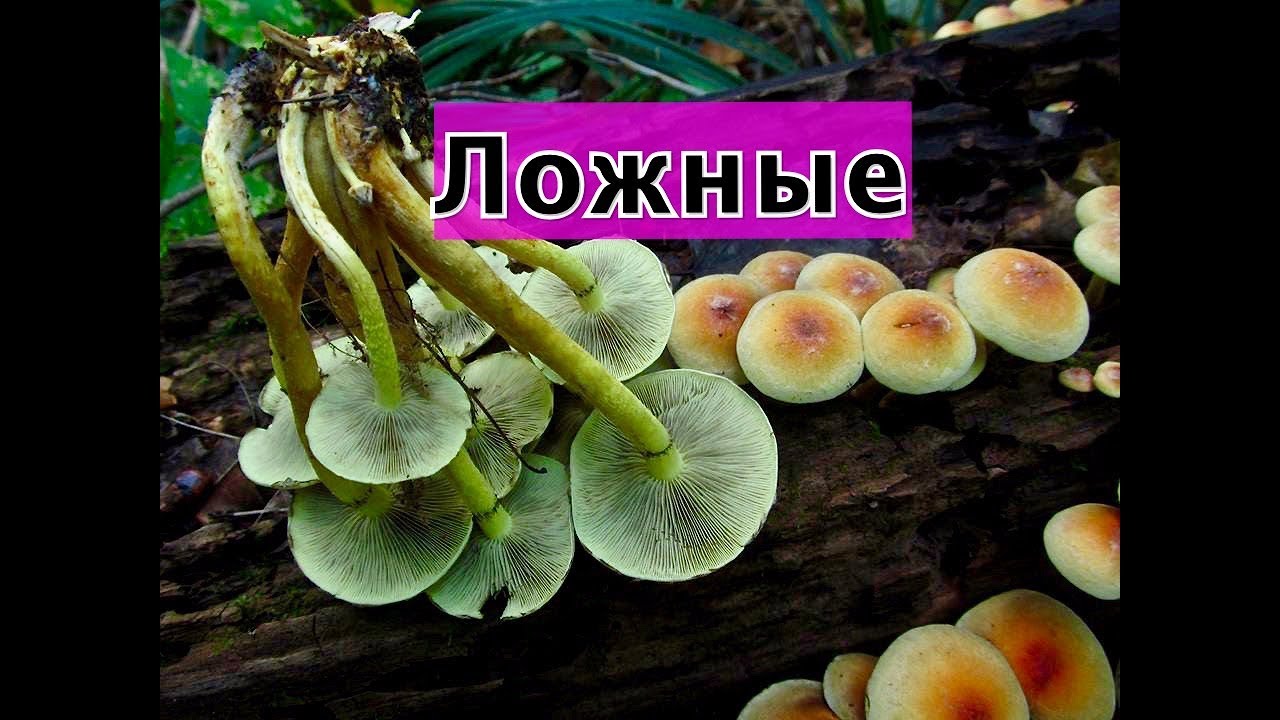False Foam Sulfur - Yellow Hypholoma Fasciculare
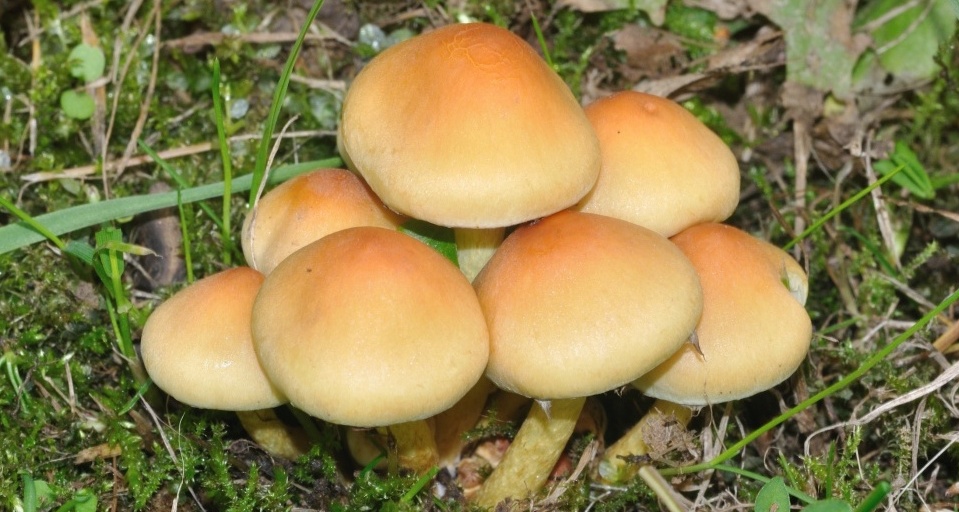
False Foam Sulfur - Yellow Hypholoma Fasciculare
Poisonous mushroom, the most dangerous of false honey agarics. Causes serious food poisoning when consumed.
Appearance
The cap is small, up to 7 cm in diameter, initially bell-shaped, later extended. Colored in sulfur-yellow, brown-yellow shades, always darker in the center.
The hymenophore is lamellar, the plates are thin and frequent, adherent to the stem, in youth it is sulfur-yellow, later darkening to greenish or olive-black. Spore powder of chocolate brown color.
Leg up to 10 cm long and up to 0.5 cm in diameter, fibrous and even, hollow inside, light yellow hue.
The pulp is white or light yellow in color, has an unpleasant odor and a pronounced bitter taste. Does not change color on the cut.
Where and when it grows
This species grows in large groups, very rarely singly, from late May to late autumn, on old stumps, rotting wood, on the ground near stumps and old trees. Occasionally found on the trunks of living trees. It prefers deciduous forests more, but can also be found in conifers.
The degree of danger
The toxins contained in the mushroom are not destroyed during heat treatment, and when they enter the human body, they cause severe food poisoning - vomiting, diarrhea, increased heart rate and sweating, up to loss of consciousness. Symptoms of poisoning can appear within an hour to six, after eating the mushrooms. Lethal outcomes have not yet been recorded.

False Foam Sulfur - Yellow Hypholoma Fasciculare
The easiest way to confuse this mushroom with this mushroom is the edible honeydew Hypholoma Capnoides, which is similar in appearance, but this species grows only in coniferous forests, and its hymenophore plates are gray in color.
Gray-lamellar pseudo-foil (Hypholoma capnoides)
- Other names for the mushroom:
- Seroplate honeydew
- Poppy honey
- Poppy
- Gifoloma poppy
- Gifoloma ocher-orange
Synonyms:
The gray-lamellar pseudo-foil (Latin Hypholoma capnoides) is an edible mushroom from the genus Hypholoma of the Strophariaceae family.
Cap of seroplate honeydew:
A diameter of 3-7 cm, from hemispherical in the youngest mushrooms to convex-outstretched at maturity, often with remnants of a private veil along the edges. The cap itself is hygrophane, its color strongly depends on humidity: in dry mushrooms it is dull yellow with a more saturated middle, in wet mushrooms it becomes brighter, light brown. As it dries, it begins to brighten symmetrically from the edges. The flesh of the cap is thin, whitish, with a faint odor of dampness.
Plates:
Frequent, adherent, white-yellowish in young fruit bodies, acquiring the characteristic color of poppy seeds as they grow older.
Spore powder:
Brown violet.
The peduncle of the gray-lamellar mushroom:
5-10 cm in height, 0.3 - 0.8 cm in thickness, cylindrical, often curved, with a rapidly disappearing ring, yellow in the upper part, rusty brown in the lower part.
Spreading:
Gray-lamellar pseudo-foam is a typical tree fungus. Its fruiting bodies grow in bunches on stumps and roots hidden in the ground. It grows only in coniferous forests, most often on pine and spruce, both in the lowlands and high in the mountains. It is especially abundant in mountain spruce forests. Pseudo-lamellar seroplate is widespread throughout the temperate zone of the northern hemisphere. You can collect it from spring to autumn, and often in mild winters. It grows like a "honey agaric", in large intergrowths, meeting, perhaps, not so often, but quite abundantly.
Similar species:
Several common species of the genus Hypholoma, as well as, in some cases, summer honey fungus, are similar to Pseudo-lamellar. It is, first of all, a poisonous pseudo-foam (hypholoma) sulfur-yellow with plates of yellow-green color, a cap with gray-yellow edges and sulfur-yellow pulp.Next comes the pseudo-froth - brick-red hypholoma (H. sublateriiium) with yellow-brown plates and a brown-red cap, growing in bunches in summer and autumn in deciduous forests and outside the forest, especially on oak and beech stumps. Even without knowing the mushroom, it is only by formal signs that Hypholoma capnoides can be distinguished from the sulfur-yellow honey fungus (Hypholoma fasciculare): the one has green plates, and the gray-plastic one has poppy-gray. The rooted hypholoma (Hypholoma radicosum) mentioned in some sources, in my opinion, is completely different.
Edibility:
The gray-lamellar foil has a reputation for being a good edible mushroom. In my opinion, it is very similar to the summer mushroom; old specimens take on a musty, raw taste.
Video about the mushroom Seroplamellar False Foam:
Gray Lamellar False Foam - A good edible mushroom has a blue-gray, poppy-seed-colored lamellar, yellow-brown cap, whitish flesh and a pleasant taste.
For me, the seroplate pseudo-foam was and remains the “second summer honey”. When we were introduced, they told me so - here they say you are another summer honey agaric, which grows on pine stumps. I believed, which, however, I still do not regret. And what?..
How to distinguish false doubles?
Among the twins of the mushroom, there are both edible and very tasty, for example, summer honey fungus, and conditionally edible ones - brick-red false foam. When picking forest fruits, you should be very careful and careful. To learn how to identify doubles, you need to consider every detail. At the slightest doubt, it is better to leave the find in the same place and not eat it.
| Name | Hymenophore | Ring | Hat | Edibility |
False mushroom sulfur yellow |
With a greenish tint | Weakly expressed, it is absent in old mushrooms | Light yellow edges, dark, brown center | Poisonous |
Summer honey mushroom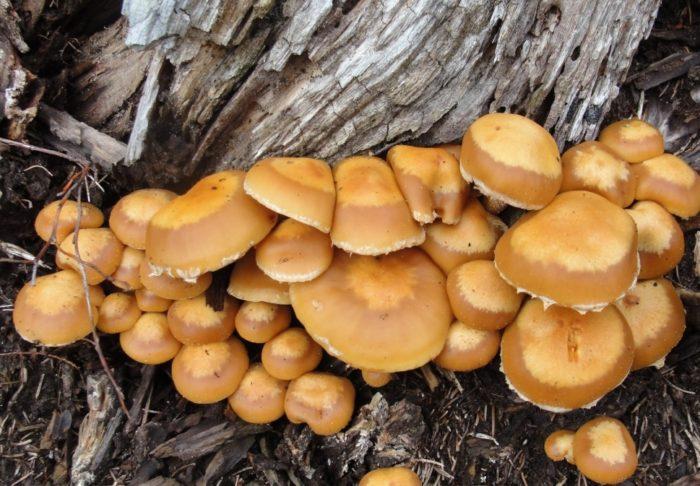 |
White, with a cream shade | Narrow, filmy, may fade with age or turn brownish with spores | Brown in rain and honey yellow in dry weather, with a light center and dark edges | Edible |
False foam seroplate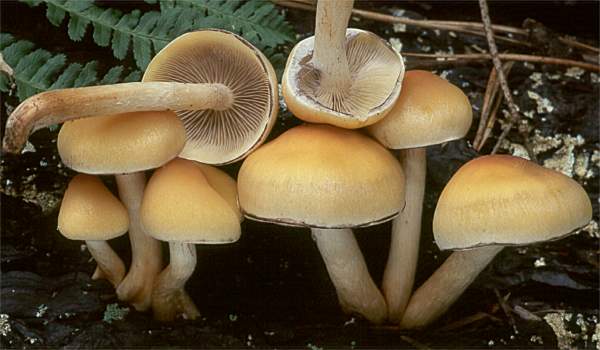 |
Whitish, creamy, later turning blue-gray and then darkening | No ring | Brown, red-brown, yellowish | Edible |
Collibia fusiform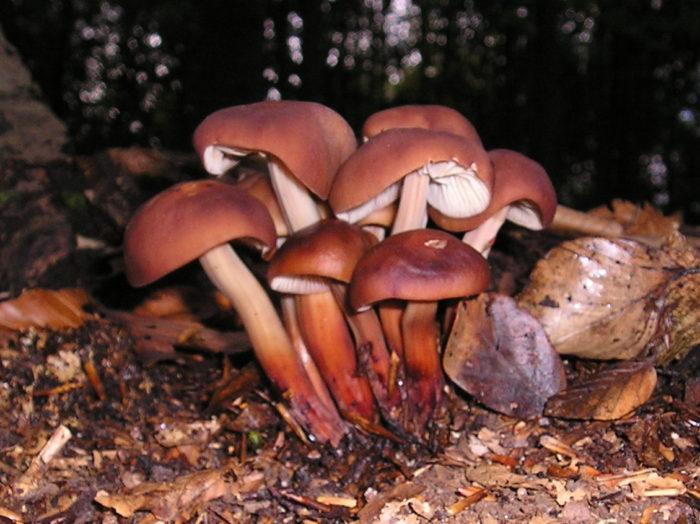 |
The plates are weakly adherent, sparse, light cream color with reddish spots | No | Red-brown, brightens with age | Inedible, low toxic |
Differences between sulfur-yellow and brick-red mushrooms
There are also poisonous counterparts. Even such dangerous mushrooms, other brethren manage to copy, no matter how strange it may sound. The table shows how they may differ.
| Name | Hat | LPs | Leg | Edibility |
Honey mushroom brick-red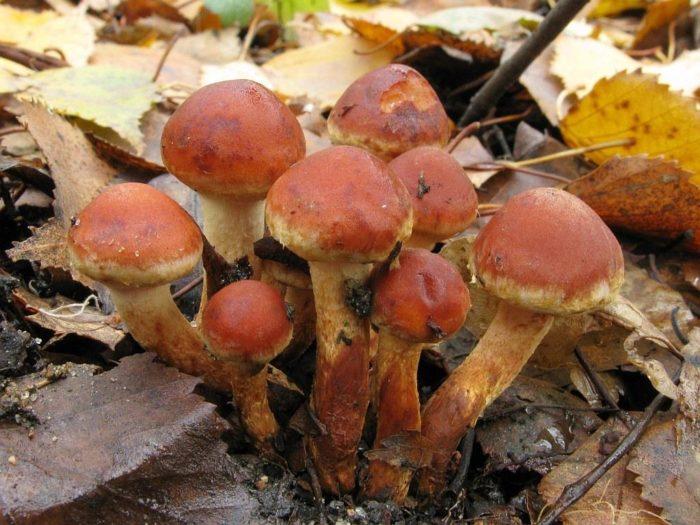 |
Spherical, red brick, light edges | Yellowish, then turn olive and dark brown at the end | Hollow, heavily curved, brick-colored | Conditionally edible |
Galerina bordered |
Brown, sometimes light cap, sheds when dry | Brown, rust colored spores | Bottom has the color of a cap, covered with flour bloom over the entire surface, hollow, with a white or yellow ring | Poisonous, deadly |
False Foam sulfur yellow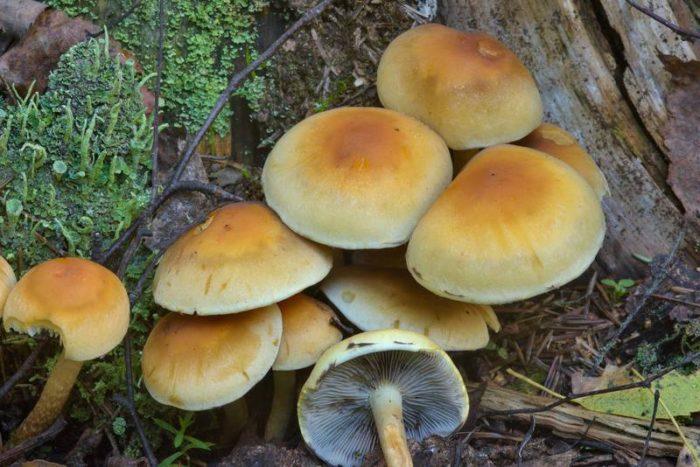 |
The edges are bent downwards, in the center the color is dark, orange, on the sides it is yellow-green | At a young age, it has a grayish tint, which changes to purple, there is always a greenish tone | The leg repeats the color of the cap | Poisonous |
Differences can be found in all mushrooms, but without experience in collecting them, you should not pluck everything and thoughtlessly put it in the basket.
It is very important to collect only those fruits in which you are confident.
Poisoning signs and first aid
Symptoms of poisoning appear 1-6 hours after ingestion. Sweating, nausea begins, then vomiting and loss of consciousness. There is no danger to life, the symptoms disappear after a while. True, there are also rare cases of death. Sometimes inflammation of the stomach and small intestine develops. Nevertheless, until recently, false sulfur-yellow mushrooms were considered not poisonous, but simply inedible.
During poisoning, you can not drink milk, juices and carbonated drinks to the patient. Vomiting should be stimulated until the stomach is completely empty. You can use activated carbon as an adsorbent. It is best to see a doctor as soon as possible.
A sulfur-yellow honey fungus is a dangerous guest in your basket. You should not pick a mushroom if there is a suspicion that it belongs to this species. Poisoning with them is rarely serious, but undoubtedly brings a lot of trouble.
Description of the mushroom
A brick-red honey fungus belongs to the genus Gifoloma, the Stropharia family. Another name for the mushroom: Brick-red false foam. Latin name - Hypholoma lateritium, Hypholoma sublateritium. The mushroom belongs to the fourth category of edibility.
The diameter of the cap is 4-8 cm (up to 12), at a young age it is bell-convex, then semi-spread, fleshy. The color of this piece ranges from brick red, reddish brown to yellow-brown (darker in the center), along the edges you can often see the remnants of a private bedspread - white flakes.
The hymenophore (lower part of the cap) is lamellar. The plates are frequent, narrow, adherent to the stem. At first they are white-yellowish, then yellow-brown, with age they become gray-brown from ripening spores. The spore powder is dark brown, with a purple tint.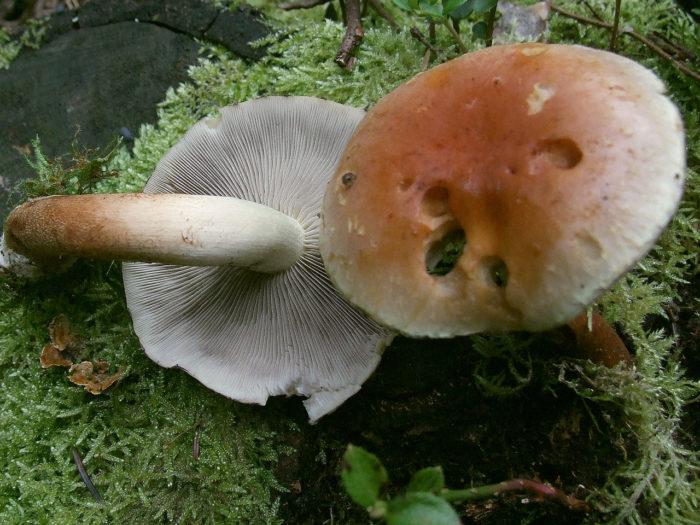
The pulp is dense, white-yellowish, slightly bitter in taste, has a subtle pleasant smell.
The length of the leg is 6-10 cm, the thickness is up to 1.5 cm, in the upper part it is light yellow, at the base it is brownish-brown, dense, even or narrowed at the bottom. It does not have the characteristic fringe rim. In young mushrooms, the leg is solid, with age it is hollow. There is no ring as such, although the remains of a private bedspread are often seen on the leg in the form of a ring-shaped pattern.
A bit of history
First described this species and gave it the binomial name Hypholoma lateritium Jacob Christian Scheffer (German mycologist) in 1871.
Interesting Facts
According to some reports, in ancient times, Slavic healers used decoctions of brick-red false foam as an emetic and laxative.
In ancient times, the mushroom mushroom was credited with a magical property to indicate a treasure: it was believed that where there are many of these fruiting bodies, the treasure must be buried.
Unlike its edible relatives, the false brick-red honey fungus often has a cobweb formation under the cap.
Hypholoma sublateritium is a very controversial representative of the forest kingdom: there are many different opinions about the advisability of eating it. Every lover of a quiet hunt decides for himself, but you should always carefully study the information about mushrooms so as not to make a fatal mistake.
Description of the structure of a dangerous mushroom
A poisonous mushroom of the Gifoloma genus of the Stropharia family, sulfur-yellow honey fungus is extremely dangerous, it is also called false. In Latin, it sounds like Hypholoma fasciculare. Later, at different times, it was given other names that scientists can still use to designate it.
A bit of history
The first mushroom was described by the British scientist, chemist, biologist and pharmacologist Samuel Frederick Gray in 1821. The name was given to Pratella fascicularis. German mycologist Paul Kummer in 1871 gave him the Latin name that exists today. After that, there were several more attempts by scientists to change the classification of the fungus, but they all turned out to be erroneous and were not recognized, although the following names can be heard among the synonyms: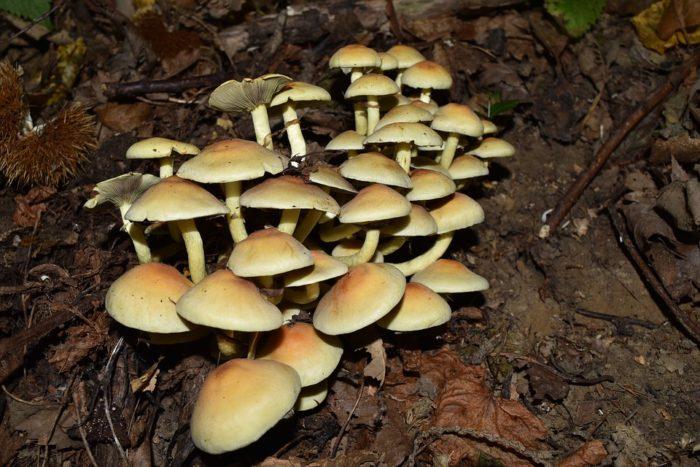
- Agaricus fascicularis;
- Naematoloma fasciculare;
- Geophila fascicularis;
- Dryophila fascicularis;
- Psilocybe fascicularis.
However, this does not change the toxicity of the fungus and its danger to humans.
Hat
In a false mushroom, it has the shape of a bell, later it becomes prostrate. Its diameter reaches 7 cm. The color varies from weak yellow to brownish and even sulfur. The edges are lighter than the central part, which can even be reddish.
Hymenophore
This word is used to refer to the lower part of the cap, in sulfur-yellow it consists of plates. Their color is darker than the surface, often sulfur-yellow, later turns greenish, and then dark olive, purple or even black.The plates adhere tightly to the pedicle, adherent, often located, thin. Disputes of a false froth of a chocolate tone.
Cut pulp
The mushroom has a very unpleasant odor. In the context of white with a yellow tint, color does not change in contact with air. It tastes bitter.
Leg
When broken, it can be seen that the leg is hollow inside. It can grow up to 10 cm long and only 0.5 cm in diameter. The texture is fibrous, the color is yellowish, light with a green tint. On the stem, the remnants of the film in the form of dark rings are often noticeable, but in an adult fungus they practically disappear. Its shape is cylindrical, and closer to the ground of a brown dark shade.

